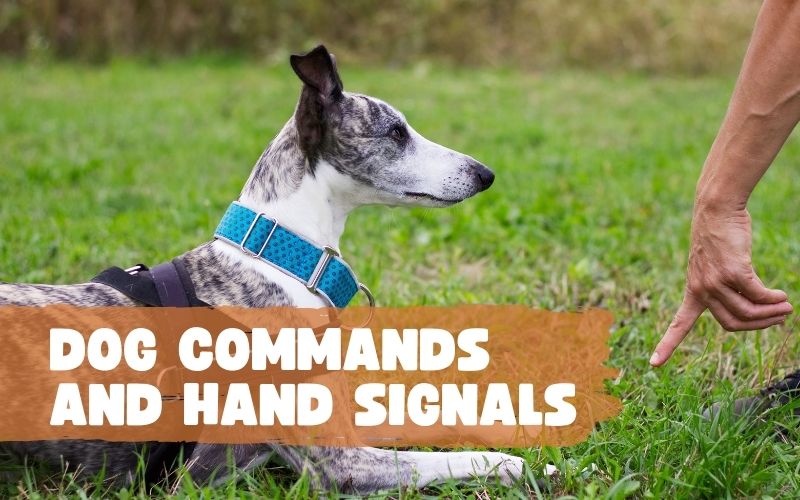It’s a rewarding yet time-consuming task to teach your dog how to obey your commands. It is recommended to teach your dog to answer your dog hand commands once they are familiar with your voice commands.
It is important that your dog is well-accustomed to both dog training hand signals besides voice commands. In fact, hand gestures are less complicated for the dogs to understand than your voice.
Voice commands and hand signals
The link between vocal commands and hand gestures is something your pet will need to master. The most efficient technique to train your dog is to use basic hand signals and emphasize good behavior with positive reinforcement.
Remove the reward gradually after your dog is responding correctly to your commands. The movements are simple if your dog is already familiar with the conventional commands: sit, stay, and so on. When you work with your dog daily, dog training and response to signals will be easier. Your dog will catch the hand gestures fast enough.
Here is the list of dog commands and hand signals.
Voice commands
1. “Name of your dog”
It may seem weird to teach a dog its name but it is a really effective way to get your dog’s attention. Only when you’re in the middle of a crowd will you appreciate the significance of this command.
2. “Come”
The single most crucial among all basic commands to introduce to your dog is “come.” When your dog is trying to learn dog training commands, it can be very difficult to tell whether he is cranky or distracted. It helps to have an extra-long leash. Allow the dog to run a bit if he wants. And if he gets stuck, offer a reward to encourage him to run.
When you say “come,” a gentle tug on the leash should be enough to get your dog’s attention. The waiting treat at the end of the leash will make him come back for more.
3. “No” command
This command is essential for you and your dog since you may need to stop your dog from doing something. This command is simple to teach your dog. Simply throw a treat on the ground, and your dog will inevitably approach it; then pull your dog’s leash and say “no.” Then, hold a treat in your hand, say “yes.” Your dog will become accustomed to this command if you repeat this routine for a few days.
4. “Sit”
This is a fundamental command. This is a command that every dog owner wishes to teach their dog. You can understand why this is important because it keeps your dog in one place. You may teach your dog to sit by using the command “SIT.”
You should hold the treat high enough for your dog to move to the sitting posture. As the sitting position provides extra height to your dog, so say “SIT” and treat your dog. Then, by repeating the same procedures over and over, your dog will become accustomed to the “SIT” command’s sitting position.
5. “Take” and “Drop” command
You can also use the treat or reward method to teach this command. Simply hold your dog’s favorite toy in your hand. He’ll undoubtedly try to catch it, and if he does, just say “Take” and extend your hand with the toy and offer it to him.
For the “drop” command, use another toy. When your dog has the toy in his mouth, say “drop it”. Without waiting for the dog to open its mouth, pop a treat in your dog’s mouth forcefully. To accept the treat, the dog has to open its mouth and this will make the toy fall out. Allow the dog to finish his treat and repeat the procedure.
Hand signals for dogs
1. Look At Me
You’ll want your dog to look at you and pay attention if you want to manage him through hand commands for dogs. To make your dog understand what you want from him and maintain their attention, keep pointing a finger towards your eye.
2. Come
If you want your dog to come to you, start by calling him to you with your own hand by your side, palms facing forward. In a circular motion, bring it to the opposite shoulder.
3. Sit
This is the most used and vital command for dogs, and it’s the best place to begin when teaching your dog how to recognize your hand gestures. Make upward motions with your hand while holding an open palm extended in the front at chest level.
4. Lie Down
When you want to make your dog lie down, start by positioning your index finger horizontally in the front at chest level. Then, move your wrist in the downward direction at 90-degrees to point to the floor.
5. Stay
An equally vital command for your dog to learn together with “sit”, it is essential that you teach your dog the “stay” command. It is the most vital command for your dog to learn, more so when you go outside on the road with your dog. This involves holding your palm facing away by your shoulder and making a downward movement.
Conclusion
It’s a good idea to teach your dog how to obey basic dog commands. This can help you understand your dog better and connect well with him. Helping your dog learn dog hand signals is exciting and will take the boredom out of the training. Once they are familiar with the basic signals, you can move on to advanced dog commands.
It’s easier than it appears since dogs intuitively understand our body language. They often understand visual cues better than verbal cues. As a result, take your training to the next level by teaching him hand gestures.
